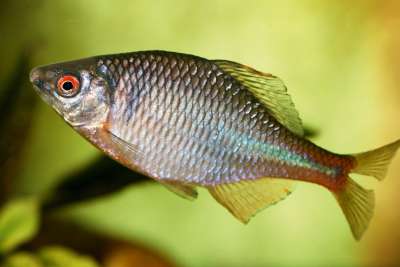
Contact Info
Junagadh - 362001
Gujarat, Bharat
contact@fishelly.com
7777 90 5050
© Copyright 2025 Fishelly - All Rights Reserved

Cyprinidae
The European Bitterling is a popular aquarium fish known for its vibrant colors and Moderate of care. It belongs to the family Cyprinidae and is native to the Europe

Temperature
50°F – 75°F (10°C – 24°C)
Minimum Tanksize
10 gallons (38 liters)

Water type
1.000 – 1.005

Suitable PH
6.5 – 8.0

Native
Europe

Size
2.5 – 3 inches (6–8 cm)

Life Span
3–4 years

Caring
Moderate
The European Bitterling (Rhodeus amarus) is a small, vibrant species of freshwater fish native to Europe and parts of Asia. Known for its bright, striking coloration and its unique breeding behavior, this species is often found in slow-moving rivers, ponds, and lakes, particularly in areas with shallow waters and abundant vegetation. European Bitterlings thrive in temperate climates, with water temperatures ranging from 50°F to 70°F (10°C to 21°C), making them well-suited to cooler, freshwater environments.
European Bitterlings are relatively small fish, typically reaching around 2 to 3 inches (5 to 7 cm) in length. They are recognized for their slender, elongated bodies and bright coloration, which can range from a golden yellow to a reddish or orange hue, particularly in males during the breeding season. Females tend to have a more subdued coloration, often appearing more silver or pale yellow. One of the most notable features of the European Bitterling is its iridescent sheen, which shines in the sunlight, making it an attractive addition to any freshwater tank.
In terms of behavior, European Bitterlings are peaceful fish that tend to live in small schools or pairs. They are primarily herbivores, feeding on algae, plant matter, and small aquatic invertebrates. In the wild, they can be found foraging along the bottoms of rivers and ponds for food. They do best in environments with abundant plant life, where they can graze on algae and hide in the vegetation for protection.
One of the most unique aspects of the European Bitterling's life cycle is its breeding behavior. Unlike most other fish species, the European Bitterling lays its eggs in the gills of freshwater mussels. The male fishes swim alongside the female as she inserts her eggs into the mussel’s gill, where they are fertilized and protected. The eggs hatch inside the mussel, and the larvae remain there for several weeks before emerging as free-swimming juveniles. This unusual reproductive method is not only fascinating but also crucial to the survival of the species, as the mussels provide a safe environment for the eggs and larvae.
Due to their small size and peaceful nature, European Bitterlings are a popular choice for aquarium hobbyists, particularly those who are interested in keeping smaller community tanks. They do well in aquariums with plants and soft, slightly acidic water. As a small species, they can be housed with other peaceful fish, although it’s important to avoid keeping them with larger, more aggressive species that might pose a threat to their well-being. They are best kept in schools of at least five or six individuals, as they tend to be more comfortable in groups, which also allows them to exhibit their natural social behavior.
European Bitterlings are not particularly demanding in terms of care. They require a well-maintained tank with clean water and good filtration, and they do best in slightly cooler conditions than many other tropical fish. Their diet can consist of a variety of small live or frozen foods, along with plant matter and algae.
While European Bitterlings are not typically found in the wild outside their native range, they can thrive in captivity with the right care. With their vibrant colors, unique reproductive behavior, and peaceful demeanor, they are a captivating addition to freshwater aquariums. Their fascinating life cycle and easy care requirements make them an excellent choice for fishkeepers interested in learning more about the diverse world of freshwater species.
European Bitterling is a fascinating aquarium fish that stands out with its vibrant colors. It belongs to the family Cyprinidae and is native to the Europe.
This species has a care level of Moderate and requires a minimum tank size of 10 gallons (38 liters). It typically reaches a size of 2.5 – 3 inches (6–8 cm).
Preferred water parameters include a specific gravity (sg) of 1.000 – 1.005, pH ranging from 6.5 – 8.0, and a temperature between 50°F – 75°F (10°C – 24°C). Additionally, maintaining water hardness within the range of 4–12 dGH is essential.
For stocking, the recommended ratio is 1:2-3 M:F. The European Bitterling is widely available and has a diverse diet that includes OmnivorePellet FoodsFlake FoodsLive FoodsOther (See article).
With a life span of 3–4 years, this species is known for its very easy care requirements. It is an ideal choice for both beginner and experienced aquarists. Providing a well-maintained tank environment with suitable water conditions will ensure the health and vibrancy of this captivating species.
Do you have any questions about European Bitterling Fish?